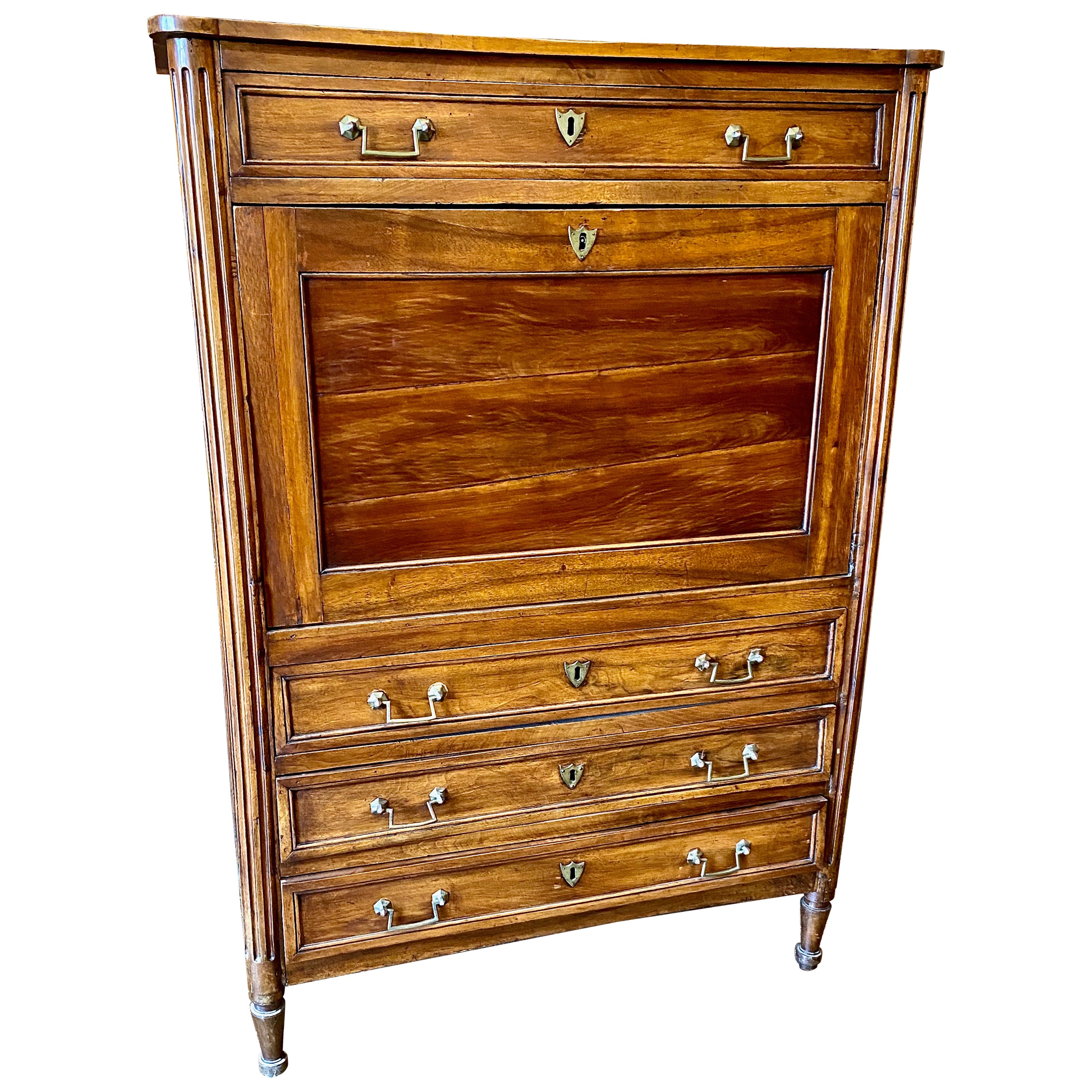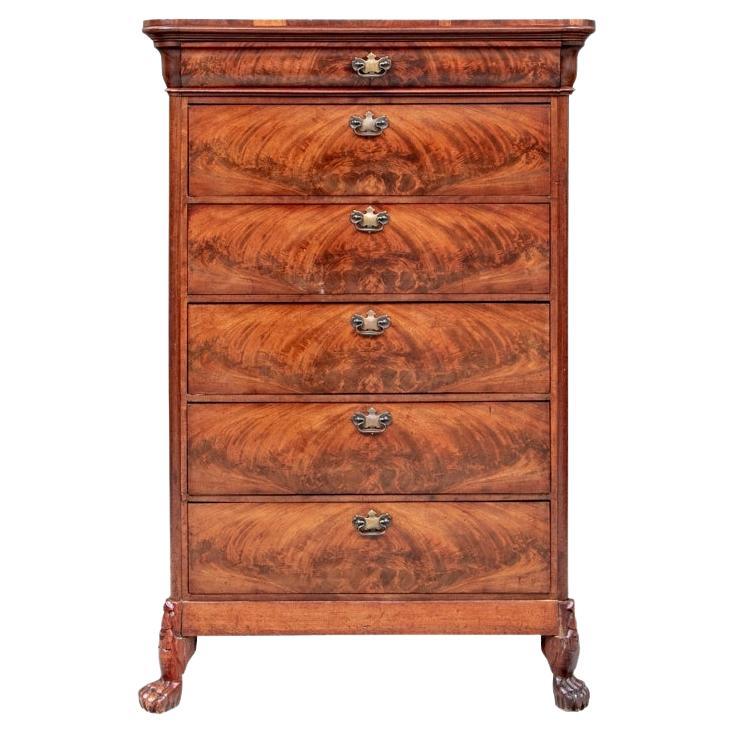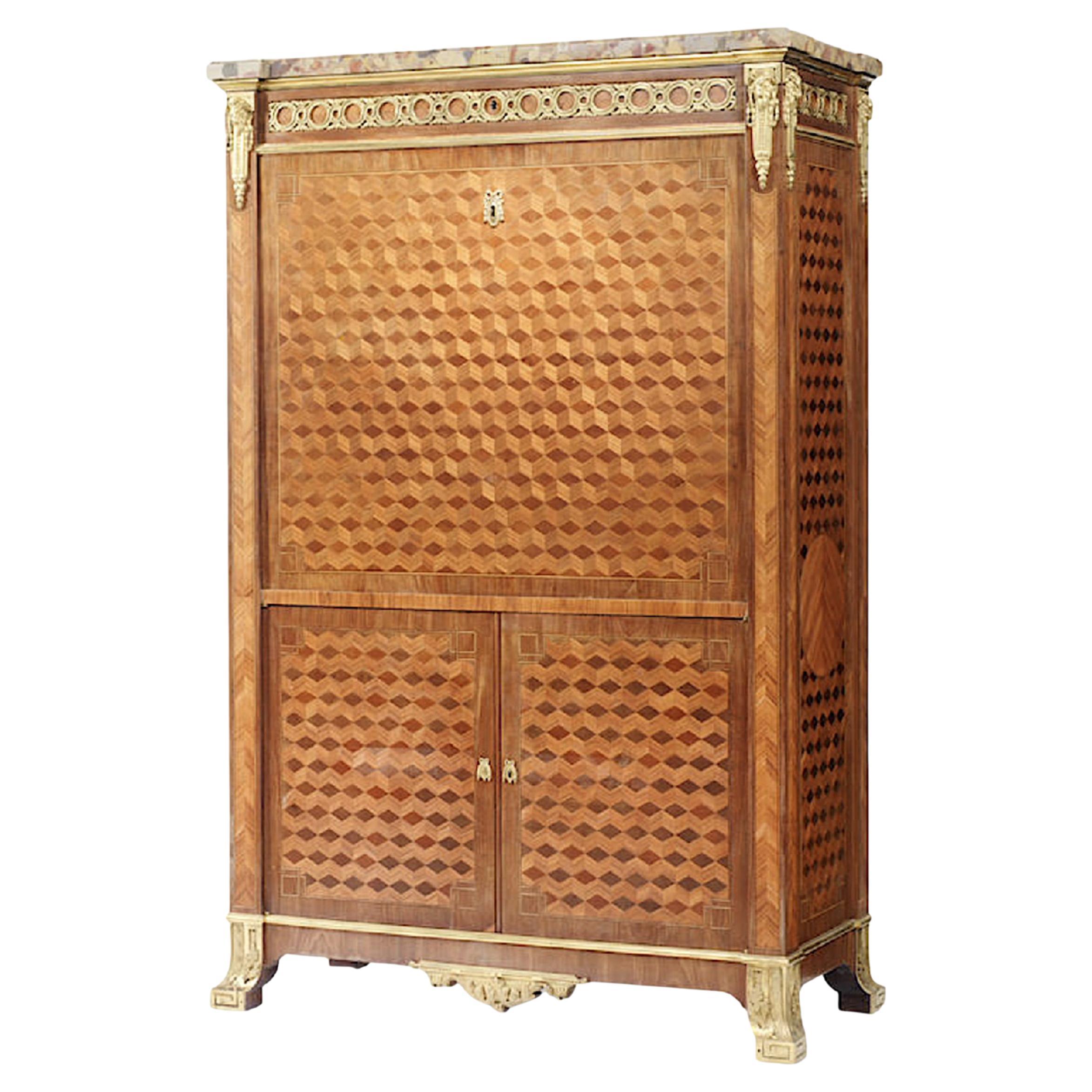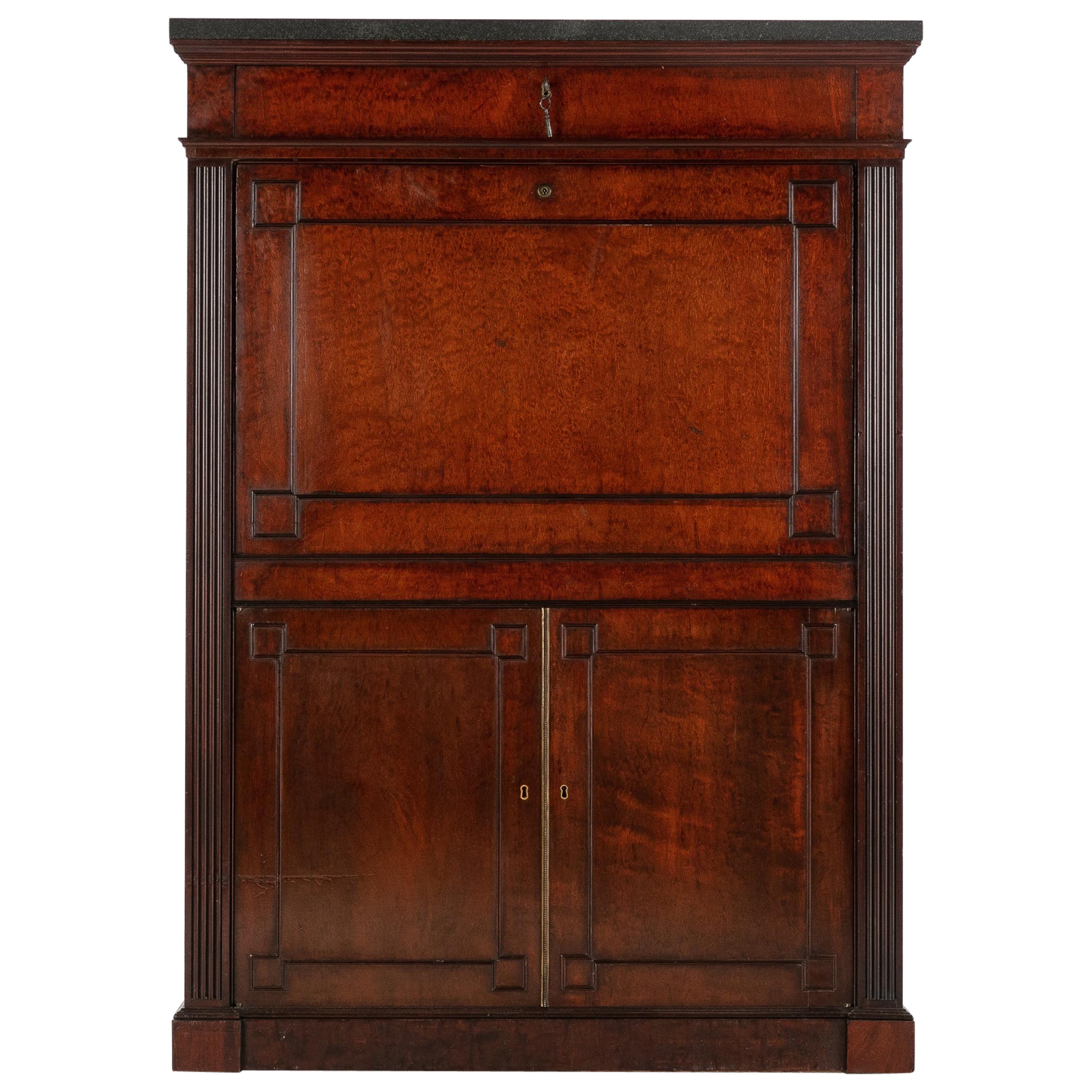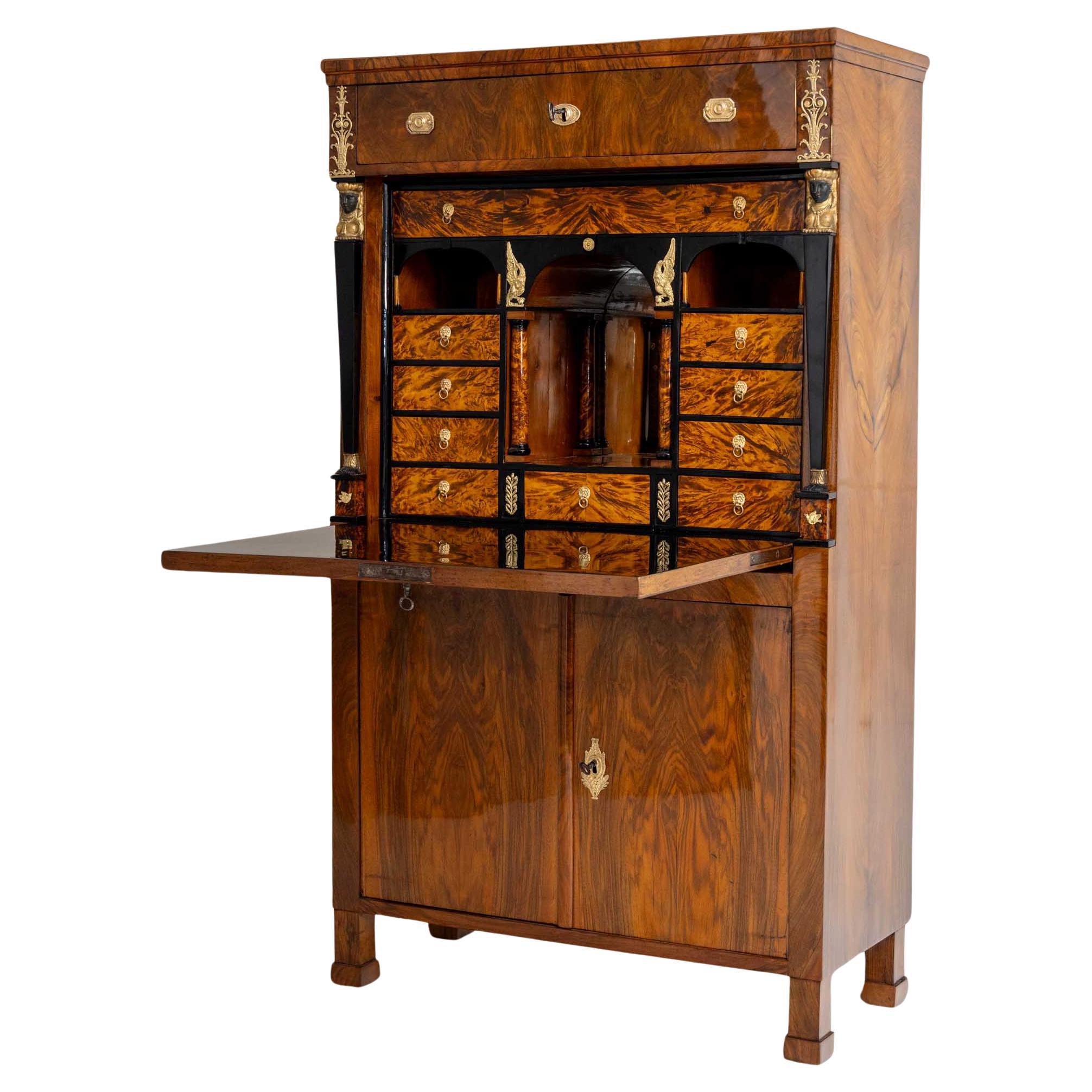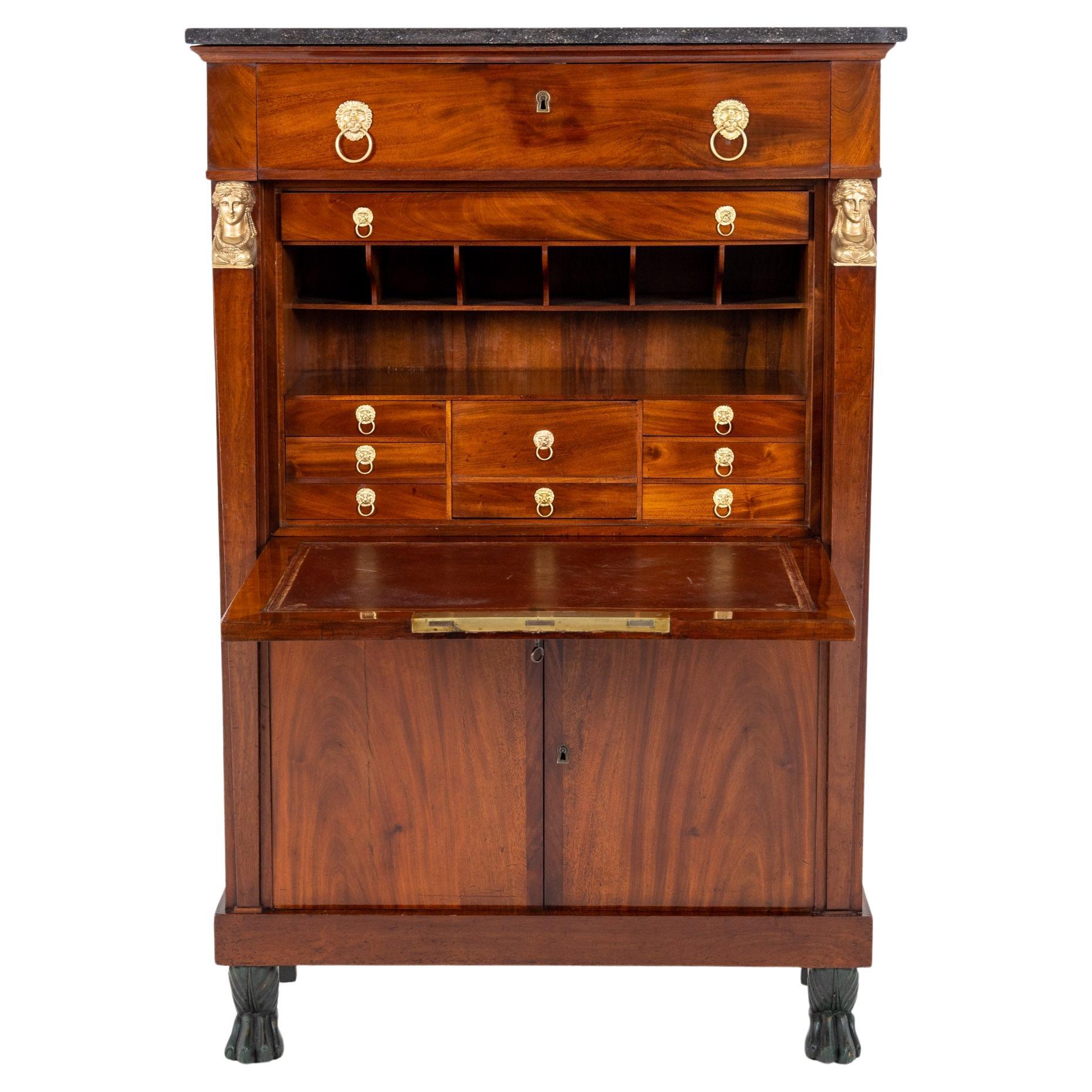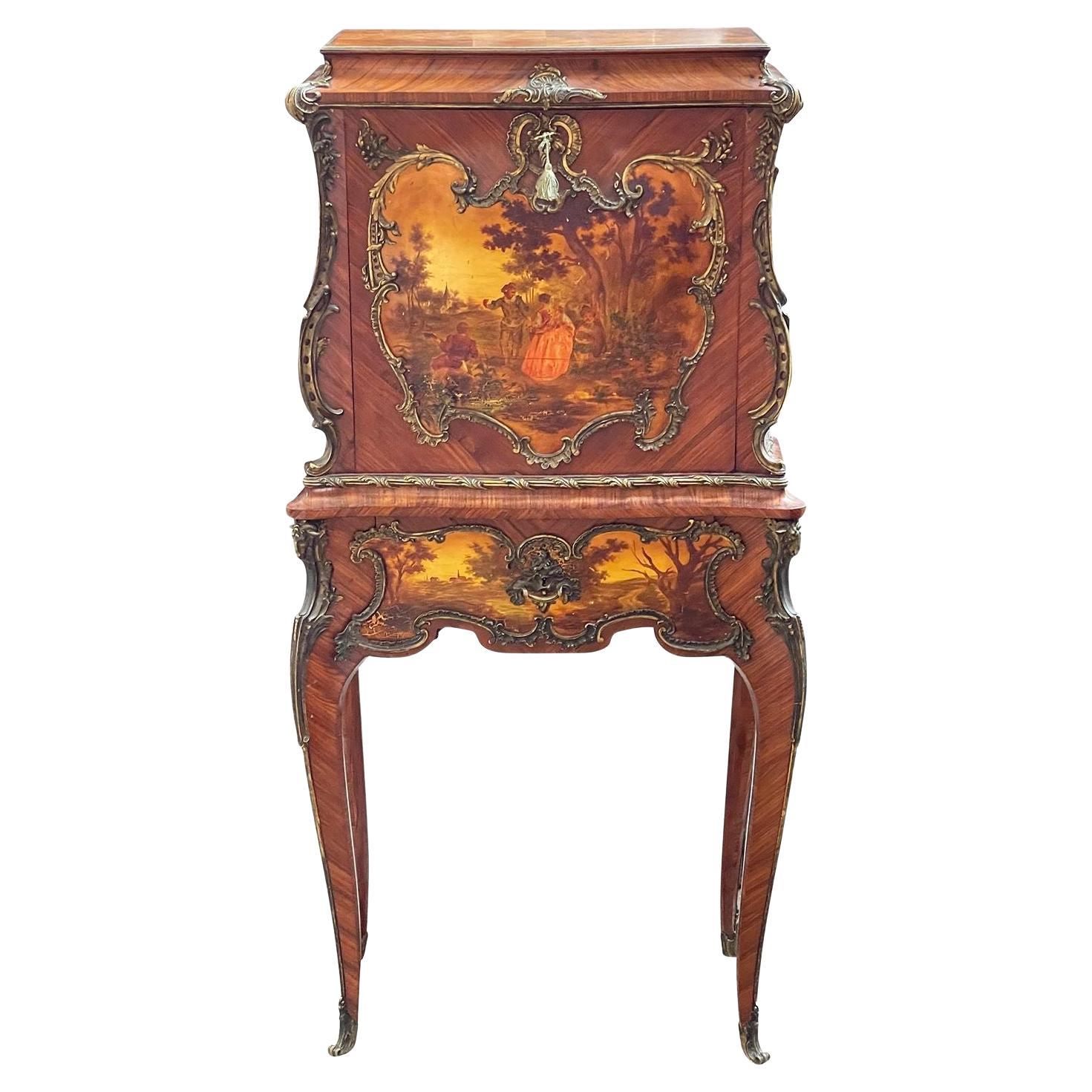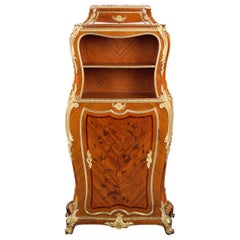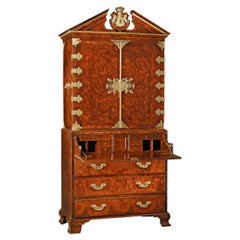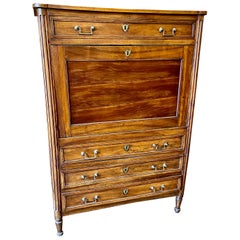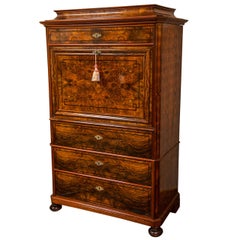
Secrétaire à Abattant by Molitor
View Similar Items
Want more images or videos?
Request additional images or videos from the seller
1 of 4
Secrétaire à Abattant by Molitor
About the Item
- Creator:Christian Dell (Designer)
- Dimensions:Height: 57 in (144.78 cm)Width: 40.25 in (102.24 cm)Depth: 18 in (45.72 cm)
- Materials and Techniques:
- Place of Origin:
- Period:
- Date of Manufacture:18th Century
- Condition:
- Seller Location:New Orleans, LA
- Reference Number:Seller: 29-03951stDibs: U1209068911284
About the Seller
5.0
Recognized Seller
These prestigious sellers are industry leaders and represent the highest echelon for item quality and design.
Established in 1912
1stDibs seller since 2010
92 sales on 1stDibs
Typical response time: 5 hours
More From This SellerView All
- 19th Century French Secrétaire by DurandBy Gervais DurandLocated in New Orleans, LASuperior craftsmanship and intricate marquetry characterize this rare secrétaire by Gervais-Maximilien-Eugène Durand, one of the most popular French ébénistes of the 19th century. Th...Category
Antique 19th Century French Louis XV Secretaires
MaterialsBronze, Ormolu
- King George I Ambassadorial Secrétaire-CabinetLocated in New Orleans, LAThis highly important secrétaire-cabinet was crafted for and specially ordered by King George I for the British Ambassador to Russia. From its craftsmanship and materials to its exceptional artistry, it is a work of royal and historic significance that exudes power in each and every detail. The broken pediment at its apex features the simplified royal coat of arms bearing the king’s crown, while the interior is adorned by portraits of the British Royal Family. Placed within the ambassador’s St. Petersburg home, this entirely unique piece of furniture would have been a potent reminder of England's grandeur and political importance. Relations between England and Russia during this period were at an all-time high. Peter the Great had traveled to England in 1698 as part of his widely known “Grand Embassy” tour, wherein he attempted to gain foreign support against the Ottoman Empire. He spent a period of nearly four months there, meeting with King William III and his court on numerous occasions. Noted academic Arthur MacGregor wrote concerning the impact of the trip, “For two decades following Peter's visit, British influence in Russia reached a peak. It manifested itself in social custom, in craft practice and in ships and naval organization... it reached a significant sector of the population before relations cooled once again and the two nations pulled back from this era of unprecedented cordiality.” First and foremost, however, it is a reminder of British might and influence. By the reign of King George I, England had come into its own as a world power. Unique in its design, this cabinet is a reflection of the country’s might. It is crafted from the highest-quality solid walnut and burr walnut adorned by gilded lock plates and engraved hinges. The presence of ormolu at its apex and lining the doors was a rarity for this period, and its addition makes manifest the importance of the design. The outer doors open to reveal multiple interiors, including fifteen separate drawers around a central cupboard; the cupboard doors each bear mezzotint portraits of George I and his father, Ernest Augustus, Elector of Hanover. An etching after the portrait of George I dating to circa 1716 is in London’s Royal Academy. A second, inner pair of doors are adorned by mezzotints of the Prince and Princess of Wales (later Queen Caroline and George II), which are both after portraits by Sir Godfrey Kneller dated 1716 in the Royal Collection. A final portrait is revealed on the very interior of the cabinet, where a mezzotint of Frederick, Anne, Amelia and Caroline, children of the Prince of Wales, resides. An etching (circa 1715-1720) after this portrait can be found in the National Portrait Gallery (London). Apart from its abundance of royal portraiture, the cabinet features stunning painted decoration, including floral designs as well as clouds, birds and trees in a bucolic motif reminiscent of Eden. Its lower portion is a study in both form and function, featuring a fitted secrétaire-drawer above three additional drawers for storage. The cabinet appears in The Shorter Dictionary of English Furniture by R. Edwards from 1964, a text that is regarded as the bible of British furniture design. Edwards describes it as a “writing cabinet...given by George I to the British Ambassador at the Russian court.” The cabinet was likely made for the 18th-century German diplomat and writer Friedrich Christian Weber, who represented English interests at the Russian court from 1714 until 1719. Although Weber’s tenure as ambassador was relatively short, while in St. Petersburg, he authored his account entitled Das veraenderte Russland (The Present State of Russia), which was published in three volumes in 1721, 1739 and 1740. It may, however, also have been made for George Douglas, 2nd Earl of Dumbarton, who served as ambassador alongside Weber in 1716. Diplomatic relations ceased between the two countries in 1721. In 1928, the cabinet appeared for sale at the International Exhibition of Antiques & Works of Art in Olympia. It had previously been in the collection of the Woltner family of Bordeaux, the celebrated vintners who owned the estate Château Laville Haut-Brion and produced wine of the same name. According to the family, Monsieur Woltner was given the cabinet as a gift from an aunt who lived in Russia for many years. After leaving the Woltner collection, the cabinet was acquired by William Berry...Category
Antique 18th Century English Georgian Secretaires
MaterialsBrass
- 18th Century English SecretaryLocated in New Orleans, LAQueen Anne period furnishings such as this walnut secretary are incredibly rare and important examples of English cabinetmaking. This secretary is of the most outstanding caliber, boasting desirable double bonnet, mirrored cabinet doors...Category
Antique 18th Century English Queen Anne Secretaires
MaterialsWalnut
$88,500 - Jockey Scale by W & T AveryBy W & T AveryLocated in New Orleans, LAA fantastic piece of horse racing history, this English jockey scale was specially crafted by W. & T. Avery of Birmingham. These handsome scales were used...Category
Antique 19th Century English Victorian Sports Equipment and Memorabilia
MaterialsIron
$34,500 - Terrestrial Globe by W. & A.K. JohnstonBy W. & A.K. JohnstonLocated in New Orleans, LAMeasuring a monumental 30 inches in diameter, this impressive globe was crafted by the renowned firm W. & A.K. Johnston. Founded in 1825, the Johnston firm is considered the foremost...Category
Antique 19th Century English Victorian Globes
MaterialsBrass
- Desk Clock by CartierBy CartierLocated in New Orleans, LAThis elegant desk clock by Cartier features a soft blue guilloché enamel and gold frame. With Roman numerals marking the hours, the dial's radiant guilloché pattern is well-complemented by hands studded with fine white diamonds. An outstanding example of 1920s design, this remarkable timepiece comes with its original red leather case, excellent condition. The Cartier tradition...Category
20th Century French Table Clocks and Desk Clocks
MaterialsEnamel, Gold
$48,500
You May Also Like
- Louis XVI Secretaire a AbattantLocated in Pasadena, CAThis is a very good example of a late 18th century Louis XVI Secretaire a Abattant. The secretaire is crafted of solid walnut and is a ...Category
Antique Late 18th Century French Louis XVI Secretaires
MaterialsBrass
- French Empire Secrétaire á AbattantLocated in Baton Rouge, LAA handsome 19th century Empire secrétaire à abattant made of rich bookmatched and figured walnut. This desk has a black fossil marble top resting above a drawer, accessible with a hidden pull. Below is a fold front door revealing a fitted interior with a functional writing surface, inset with worn green leather with gold tooling. The interior has an open storage shelf flanked with empirical styled columns over a set of six drawers of varying sizes. The writing surface is supported with rounded brass hinges. Below are three easy to use drawers...Category
Antique 19th Century French Empire Secretaires
MaterialsMarble, Brass
- Austro-Hungarian Secrétaire à AbattantLocated in Woodbury, CTWearing a layer of Austrian walnut root veneer, this secrétaire has a unique grain that one does not often see; it swirls and undulates across the surface drawing the eye along in a ...Category
Antique 19th Century Hungarian Biedermeier Secretaires
MaterialsWalnut, Burl
- Antique Burled Secretaire a AbattantLocated in Bridgeport, CTA tall cabinet with carved cavetto cornice, over a slim curved frieze drawer and one upper and two lower long drawers. The middle faux drawers drop down to the secretary. The fitted interior with drawers, and a center compartment with door housing an inkstand with two glass bottles with silverplate tops. With patinated brass bat...Category
Antique 19th Century Secretaires
MaterialsBrass
- French Ormolu-Mounted Secrétaire À Abattant by MilletLocated in London, GBThe brèche d'Alep marble top above a long frieze drawer, the hinged fall front with gilt-tooled brown leather writing-surface, the fitted interior with four open compartments and a long drawer, above two cupboard doors, the interior with one shelf, on spreading foliate feet, the gilt-bronze banding to the left side signed Millet à Paris.Category
Antique 19th Century French Secretaires
MaterialsFruitwood, Tulipwood
- Regency Mahogany Gillows Secretaire à AbattantLocated in Gloucestershire, GBRegency fiddleback mahogany secretaire à abattant in the manor of Gillows, with a black slate top. A cantilevered fall front, having typ...Category
Antique 19th Century English Regency Secretaires
MaterialsMarble
Recently Viewed
View AllMore Ways To Browse
French Secretaire Abattant
Table Secretaire Antique
Gilt Bronze Secretaire
Architectural Griffins
Antique Mahogany Secretaire Chest Of Drawers
Abattant Desk
Imperial Mahogany
China Secretary
Pair Of Directoire Cabinets
Stamped Secretaire
Japanese Black Lacquer Chest
Pair Of Small French Commode
Pair Of Empire Chests
Small Satinwood Chest
French Empire Secretaire
Marble Top China Cabinet
Griffin Marble Base
Cabinet Marie Antoinette
